You are here
Guidelines for smart & innovative integration of ventilation
Innovative concepts of ventilation for new build and retrofitting projects
Rainer Pfluger, University of Innsbruck, Rainer.Pfluger@uibk.ac.at
1. Facade integration:
Especially in case of refurbishment, any changes and construction within the dwellings should be reduced to a minimum for two reasons: The living space should not be reduced too much by the ventilation system (heat recovery unit and air ducts) and the integration should be as minimal invasive as possible in order to avoid disruption to the residents. Another advantage of façade integration is the minimization of the ductwork for outdoor air (ODA) and exhaust air (EHA).
Decentralised units (one per dwelling): How may heat recovery units be integrated in prefabricated facade elements and in assembling at the construction sites? Which design options may be offered for the intake of external air and the outgoing of exhaust air?
Centralized units (one heat recovery unit for several dwellings): How to install supply (SUP) and extract (ETA) air ducts in the external insulation system?
The following example shows the façade integration of the ducts in one of the SINFONIA buildings (NHT, IN22/23).
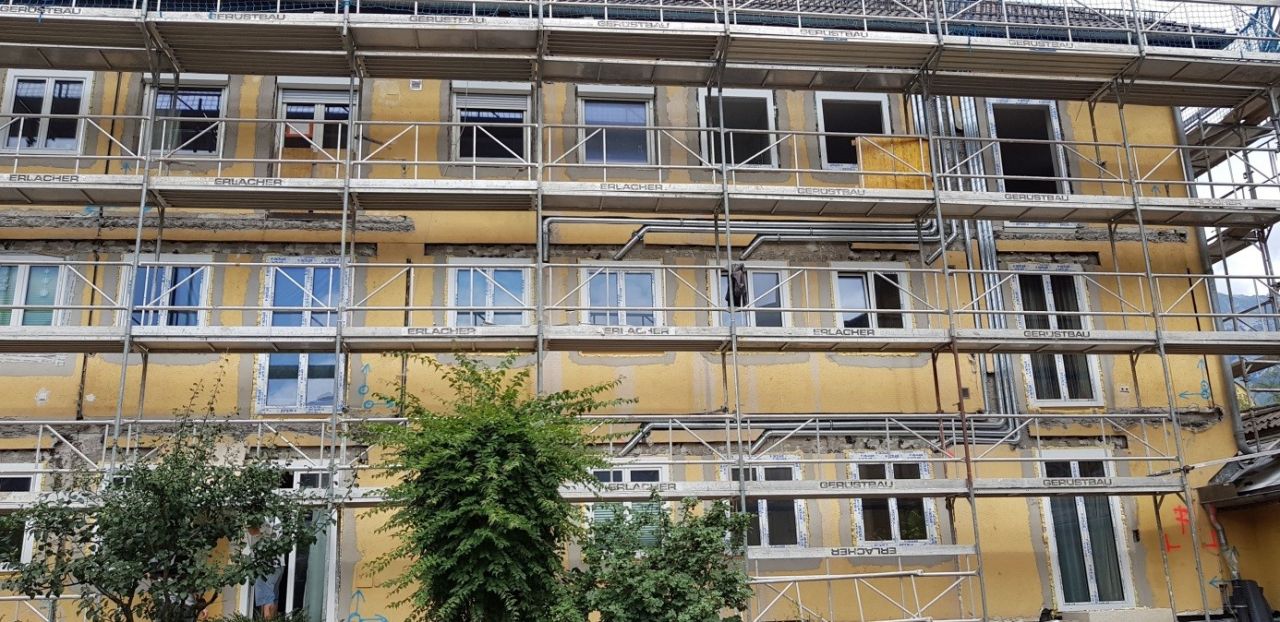
Photo Source: Malzer, H.
2. Window integration:
Connection to and integration of heat recovery units and ventilation ducts close to window reveals, window lintels and parapets, in- and outlets through shadow gaps and slot diffusers.
The following design principle shows how the slot below the window sheet is used as outdoor air inlet. Compared to an air inlet via a grille, this solution is much better from architectural and design point of view. The exhaust air outlet is located at the window reveal. This slot diffuser should blow the air to the outside to avoid any condensation/freezing of the EHA-humidity at the window.
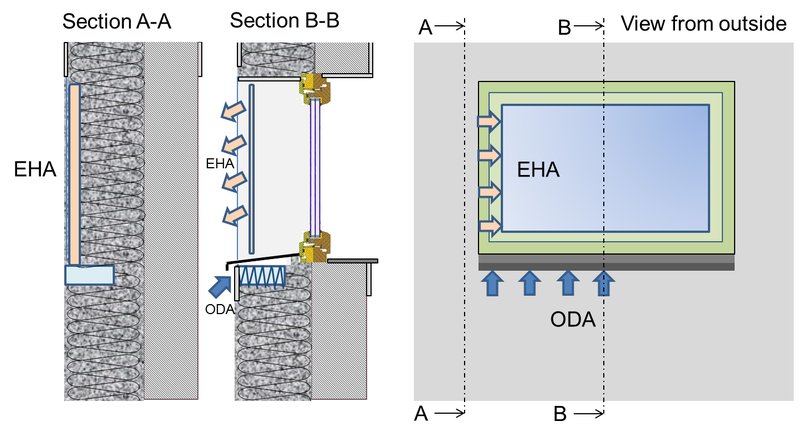
Source: Pfluger, R.
This principle was adopted by the Smartshell refurbishment solution of Franz Freundorfer, which was shown at the Passive House Conference Exhibition in 2017 (see next figure). In this case the open larch casing works as ventilation grill, the outdoor air is sucked through and is ducted to the horizontal air filter below the window sheet.
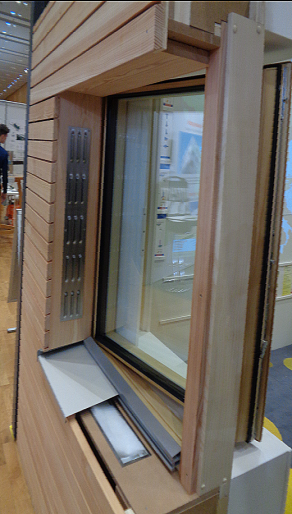
System: Smartshell, Photo Source: Pfluger, R.
3. Space-saving systems for the retrofitting of small housing units:
Which opportunities can be offered for the post integration provided restricted space of given floor plans?
Since several years, new types of ventilation units especially suitable for post integration are on the market. Besides the wall integration, also the integration in the ceiling or floor is possible. In all of this cases, the geometry of the unit should be as flat as possible and the location of the air duct connections have to be at the narrow sides of the casing.
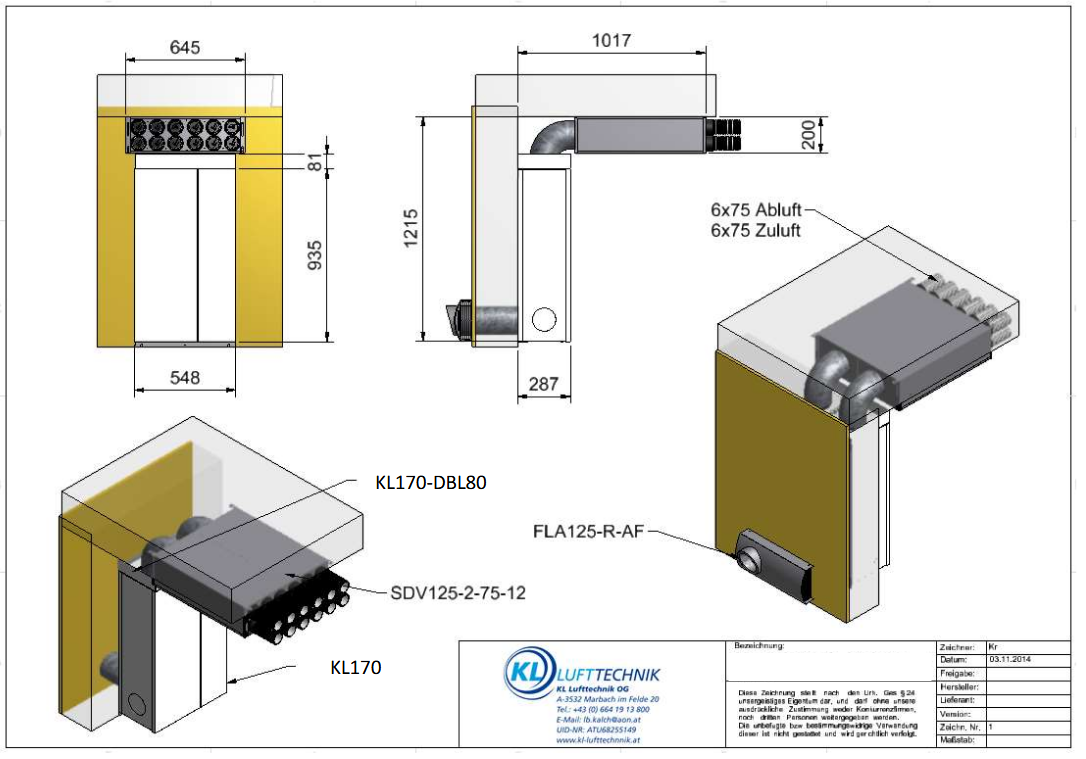
Source: KL Lufttechnik
As the post integration calls for flexibility, different options for the connections should be provided. Either this options are available as different models of the unit, ore inbuilt within the same model (non-used connectors to be closed).
Besides the heat recovery unit itself, also the air distribution boxes and silencers should be as flat as possible, if they should be integrated within the suspended ceiling. In case of centralized ventilation systems, each dwelling is equipped with two volume flow controllers. In order to save as much space as possible and to save installation costs at the same time, the combination of volume flow controller, silencer and air distribution box is a good solution (see next figure).
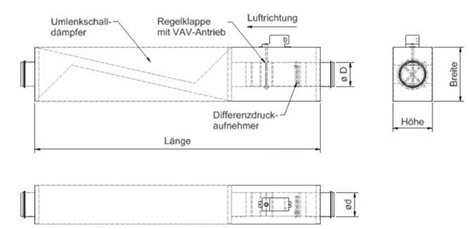
Source: Pichler Luft
4. Cascade ventilation (passive overflow):
Saving of supply air ducts and components through zoning of the floor plan in supply air, overflow and exhaust air zones: Normally the supply air zones are living rooms and bedrooms. The air is routed from this supply air zones via the overflow zone (e.g. corridor) to the exhaust air zone (e.g. kitchen, bathroom). This air routing principle is called cascade ventilation. Compared to a system with supply and extract air for each room, this principle already saves a lot of space and money. By means of the extended cascade ventilation, the supply air may be restricted to bedrooms. In this case, the living room is regarded as overflow zone as shown in the next graph.
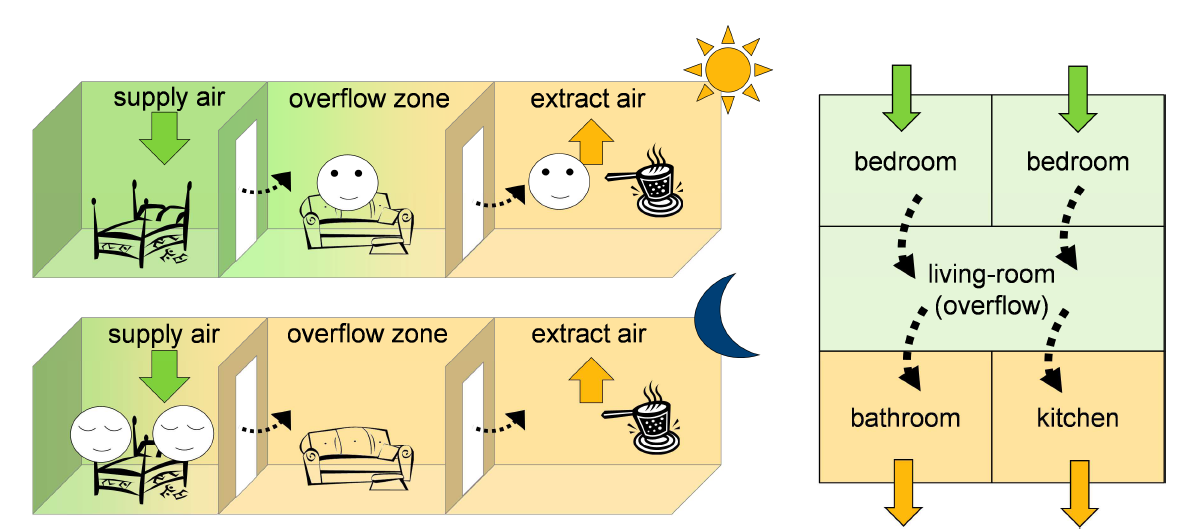
Source: Sibille, E.
5. Active Overflow:
Active overflow may be useful especially for retrofitting because an even more extensive reduction of the duct network may be achieved. In order to do so, small fans are implemented to deliver air from corridors to bed- and living rooms.
In the following graph, the fan blows the air actively into the room, it returns to the corridor via a passive overflow. From building physical point of view (avoiding overpressure), the other way round is to be preferred.
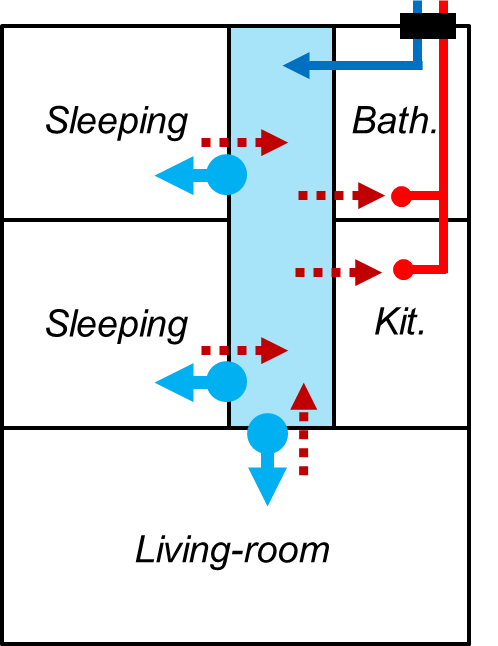
For refurbishing, several options of installation of this active overflow are available:
- Door leaf integration
- Doorframe integration
- Mounting above the door
- Mounting besides the door
The decision, which solution to choose depends on the cost and the intervention for the installation. The minimal intervention is to be done in case of door leaf integration. The disadvantage of this solution is the fact, that the fan unit is mounted in the moving part (problem for wiring, mechanical robustness etc.). The wall integration however requires higher construction effort.





